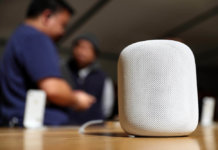Interview with Matt Toner, Founder, Playground, Canada
If one were to engage in a game of word association, the immediate response to Big Data would, in all likelihood, not be Playground. The former conjures up images of high tech devices while the latter is often seen as a refuge of childlike wonder from all things technical.
And yet, where these two seemingly disparate concepts intersect, you will find the Vancouver, Canada based software company, Biba. Since their inception in 2014, Biba has blazed new trails in the playground space by creating games that use mobile devices as a tool to get kids more active in parks and playgrounds.
In the process, Biba has been able to do something that has truly never been done before; collecting quantifiable data on how, when, and why playgrounds are utilized by children and families around the world.
The man at the helm of this play space revolution is Biba CEO, Matt Toner. Toner’s circuitous journey has taken him from his early career as a Canadian economist and diplomat to the start-up boom in late 1990’s New York. After being involved with at least half a dozen different start-ups, he was able to recognize the unique quality that Biba represents.
Tharawat Magazine recently had the opportunity to sit down with Matt to discuss the pioneering aspect of the company, the future of the playground experience, and the challenges and opportunities found in the renewed focus on data privacy issues.

You have been a serial entrepreneur for many years. What made you fall in love with business idea behind Biba?
It’s very rare to find a space nowadays that has been relatively untouched by digital disruption. If I showed you a playground photo from today and I showed you one from 100 years ago, they would look remarkably similar. This is one area where there’s been very little innovation of any kind. There have been more changes to your cell phone in the past 10 years than there’s been in the playground in the last century. There’s a variety of reasons for this, both good and bad. First, there is a sentiment that technology shouldn’t be in the playground because kids should have a healthy outdoor experience. And secondly, playgrounds and kids’ imaginations all pretty much work well together so why mess with it. A slide is still a slide, a swing is still a swing, and kids still love them.
But what we found when we began our exploration is that in recent times, there’s been a marked decline in outdoor activity for children. Over the past 10 years, about 8 hours per week has been taken out of their diet, so to speak. It’s been replaced largely with screen time of one form or another, whether an iPhone, an iPad, or a television. Screen time was starting to gobble up outdoor time. But that outdoor time is crucial for their development in many, many ways. Initially, our thesis was that we need to take a little bit of the digital screen time component and use that to lure the kids back outside into the playgrounds. So we conceived of Biba as being kind of an AR mobile game similar to Pokemon Go. The key difference is that the games are meant to be played on a playground with other kids, so that they have to use the slides, they have to use the swings, they have to run and jump and do all these things in order to play these games. We actually completed a study last year with a local university that showed that kids playing Biba games on a playground had better health outcomes than kids doing traditional play.

It must have been very satisfying to receive that kind of academic support for your company. Did that have an immediate impact on your participation levels?
That was very gratifying in a lot of ways. But it wasn’t really moving the needle. And we had been working with the largest playground company in the world as a close partner, so we were trying to figure out why this wasn’t resonating. It was a conversation we had with a few city planners from some major American cities that made us stand up and take notice. What we found was that we were gathering a lot of data such as where the games are taking place, and we found that the city planners were really, really interested in this information. After a little bit of investigation, we found out why. It turns out that in cities large and small, there isn’t a really good way to get good data around what’s happening on playgrounds. There are billions of dollars spent on playgrounds every year but there’s no way to assess what’s going on to analyze what’s a good use of time and money, what communities are heavily engaged with play, and what communities don’t use the site. So the fun factor for kids, the fitness factor for families; that didn’t really move the needle. But when we talk to city operators about data and how it could be used to guide their hand and reinforce their judgment and open up new possibilities, that’s when things started to really move. As of now, we have more than 1,500 of our smart playgrounds deployed worldwide, and in a period of little over a year, it’s gone from a curiosity to a standard feature of our playground park.
What were the biggest insights that you gained from the data that you collected and how did they lead to different decision-making by the communities or the playground operators?
Right now, we’re in the process of trying to differentiate the signal from the noise. We are currently working on something we’re calling the Hot 100, which is an encapsulation of which cities are more play-focussed based on a number of factors, capital expenditures, etc. Most of our city partners are primarily interested in what we would consider the most basic data correlations. Weather, for example, is big in helping them set up their programs because there’s nothing worse than planning an activity for a park and have nobody show up because they picked the wrong day, the wrong time, or the wrong park. We have one city on the west coast that was wondering what happens on holidays. Do more kids come to the playgrounds or do fewer come because parents are taking them on little excursions elsewhere? They really had no way of understanding that.
It’s a really interesting time where we’re really working to educate a lot of stakeholders now that we have really interesting information to work with. There was one city we talked with that confessed whenever budget time came around for them to defend their strategy and their expenditures to the city council, they would bring in this report that they had commissioned about 15 or 20 years ago. They knew this study was dated and no longer relevant but they thought that was the only shred of evidence they had. Now we’re able to give them monthly reports and custom data reports that they can access at their leisure.

And yet as you say, there’s basically no historical data on this except for how much we spent on the playground. For most playgrounds in North America, was there anything in term of quantifiable data that you that you could look at? Surveys or commissioned studies or something like that?
For us, we started from square one but the cities themselves would occasionally commission an expert to come in and do a study. Of course, as soon as that report was done and they had spent tens of thousands of dollars on it, it was out of date very quickly. We are looking at a metric called Playscore right now in which we classify different cities by a number of criteria and then benchmark play activity from like to like. There’s no point in comparing a small town with New York City. There are so many different factors that the comparison is not meaningful. But for small towns in similar areas, you can compare those fairly well. And we give that information to the city planners in the form of comparative report cards, where we can say, “You’re in the 23rd percentile here but you’re in the 90th percentile there. Here are some things that you might try to move up in this ranking.” We’re taking the product from very basic correlations to water cooler tidbits to some meaningful benchmarks, where we can get into some really interesting predictive stuff after that.

Who advocates for your product the most? Is it the parents who feel like this is a great way of engaging the kids when they’re outside or is it the cities?
Well to be honest with you, I really think it’s been our corporate partner because I believe they see this as the future of play. I think it’s a good partnership in that we get the benefits of their scale and they get the benefits of our start-up recklessness. They’ve been very steadfast with us and we work very closely with them on how to grow and refine and reconsider our product. In my experience, we’ve had an especially good partnership. We pride ourselves on turning around their suggestions in a matter of days as opposed to potentially months. I think they have come to really understand how to work best with a really small 20-person software shop in Vancouver when they are a large multinational corporation based in North Carolina.
[ms-protect-content id=”4069,4129″]
Do you feel what you’re doing here with Biba could be transferred to schoolyard playgrounds?
We started to look very much at the school vertical because they are kissing cousins in many ways. One area that we think is really interesting for exploration, and we’ve had some really good success in the early days, is schoolyard play, like recess or lunchtime. In the U.S., some districts have had their Phys-Ed budgets eliminated and teachers want some kind of structured activity for kids to get them the physical stimulation that they need. So we’ve been developing games to suit this, games that are built for as many as 15 kids to play and to be played in the schoolyard. The teacher can come out at lunchtime and gather up those kids who maybe haven’t found a social circle, where they would naturally socialize and play these really interesting games. They can track the children’s progress over time and keep them engaged in physical activity.
And let’s face it, kids love screens. Our approach is to combine a little bit of the problem and lot of a solution. We try to balance our games with a 90/10 philosophy, where 90% of a child’s time is being physical, social and imaginative. The other 10% is screen time. The devices are always held by a parent or caregiver and they are involved in the play as a coach, a referee, and as a participant. What’s fascinating is that this is another big win for us; because kids really want to play with their parents. And the parents in the park tend to be on their phones anyways. We talked about this yesterday in our office, when we were discussing the health metrics that we provide to the parents, and it kind of gives them the proof they are a good parent.
We’re now seeing privacy concerns come to the fore in terms of personal data and technology companies. What kind of steps are you taking with Biba to reassure parents, schools, and others that the data is being used for one purpose and one person alone?
That’s a great question and I think it’s long overdue for this kind of reckoning. The pendulum has swung way too far in one direction. What we’re doing with our games is to ensure the very first screen anyone sees says, ‘Parents should hold the phone at all times’. That’s both for game structure and also as a safety issue. The second screen you get is our privacy policy screen. It says, here’s what we’re doing and here’s why we’re gathering data. It explains how we are collecting data to make playgrounds better. We’re not selling their data to third-party operators or any of that sketchy stuff. The data is internally held and only shared with our partners to make community play sessions better.
I would say about one city in five that we speak with will want to go into a deep dive to talk about data privacy, because some of them will have a smart city person. Our very first engagement was the city of Ottawa and they really put us through our paces. We spent probably eight weeks just providing them the information they were looking for. But that was more than fine with us. Our idea was always to make data privacy a feature, not just something where we’re going to do the minimum until you catch us. No, we want to be right up front in saying this is a safe place for your kids and for your data.
[/ms-protect-content]














